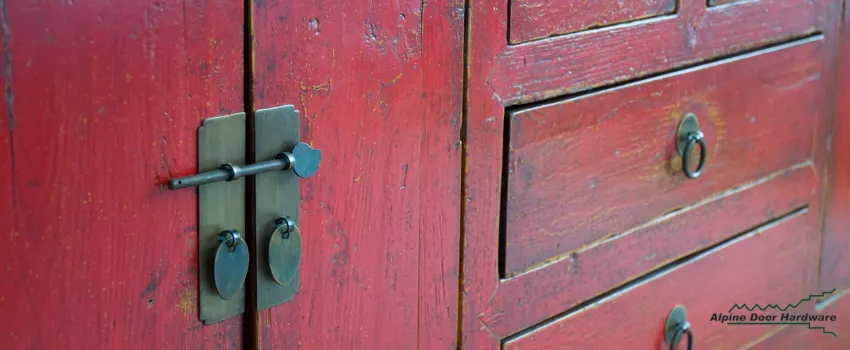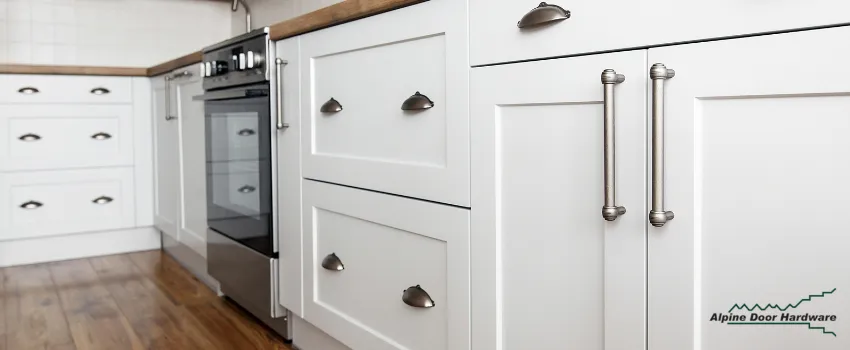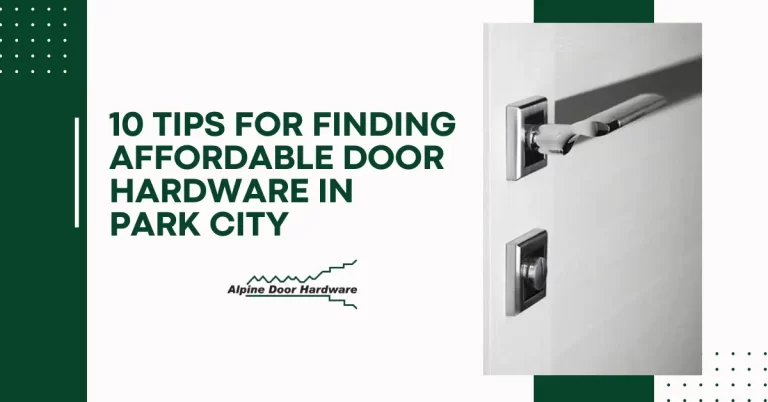Nothing safeguards your cabinets more effectively than a reliable and functional cabinet latch.
Cabinet latches are devices that secure cabinet doors in a closed position. They ensure that your cabinet doors remain shut, preventing accidental openings and maintaining a neat and organized space.
If you’re new to cabinet latches or want a refresher, you’ve come to the right place. This comprehensive guide will explain the different cabinet latch types and why you need them. You’ll also learn where you should place these latches for optimal functionality.
By the end of this helpful guide, you’ll know to select the right latch for your cabinets and improve home security.
Why Cabinet Doors Require Latches
Latches are a necessary home improvement investment. If you need convincing, here are reasons why cabinet doors need latches:
1. Cabinet latches provide safety and security.
Latches ensure that your belongings and loved ones are safe and secure. By keeping cabinet doors securely closed, latches prevent items from falling out, especially in upper cabinets where you store fragile or hazardous objects.
Additionally, they prevent unauthorized access to cabinets with potentially dangerous or valuable items.
2. Cabinet latches ensure organization and neatness.
Latches for cabinets help you maintain a neat and organized space. They keep cabinet doors firmly closed, preventing them from swinging open accidentally and causing a cluttered appearance. With latches in place, you can be confident that your cabinets will stay organized, with items securely tucked away.
3. Cabinet latches enhance aesthetic appeal.
Aesthetics is everything, even in cabinet latches. They go beyond functionality and play a role in improving your cabinets’ aesthetic appeal. With various designs and finishes, you can select latches that complement your cabinet style.
Common Types of Cabinet Latches
With many cabinet latch types available, choosing the best one for your home can be challenging. Here are the most conventional to help you out:
1. Magnetic Latches
Magnetic latches are popular due to their convenience and minimalistic design. They use magnets to keep the cabinet doors closed.
When the door is pushed to close, the magnetic force pulls the latch and keeps the door securely shut. These latches are often hidden inside the cabinet, providing a seamless look without visible hardware.
2. Roller Latches
Roller latches use a spring-loaded ball or roller to hold the cabinet door in place. When the door is closed, the roller is pressed against a strike plate or catch, creating friction and preventing the door from opening. If you want to open the cabinet, a gentle push or pull will release the roller and allow the door to swing open.
3. Turn Knob Latches
Among the well-known types of cabinet latches are turn knob latches. Also referred to as twist latches, they rotate a knob or lever to secure or release the cabinet door.
Turning the knob activates a mechanism that secures or releases the latch, keeping the door closed or allowing it to open. These visible latches on the cabinet surface can enhance the design’s aesthetic appeal.
4. Push Button Latches
Push button latches provide a simple and convenient way to open and close cabinet doors. They feature a button or lever mechanism you press to release the latch and allow the door to open.
When the button is released, the latch engages, keeping the door securely closed. These latches are commonly used in cabinets where you want easy access, such as kitchen cabinets or storage closets.
Where to Place Cabinet Latches
You must consider crucial factors when deciding where to place your cabinet latches. Here are some of them:
1. Accessibility
Accessibility is one of the most vital considerations you need to make. You should position the cabinet latches in a way that allows for easy and convenient access. Placing latches in accessible locations ensures effortless and efficient opening and closing of cabinet doors for everyone, including those with physical limitations.
2. Cabinet Structure
Your cabinets’ size and dimensions will influence the size and type of latches that are most suitable. For small cabinets, you need to use small cabinet latches for proper fit and functionality. Similarly, for larger cabinets, opting for larger latches can provide the necessary strength and security to keep the doors securely closed.
Besides size, you should also consider your cabinets’ material and construction. Cabinets made of fragile materials may require more careful placement of latches to avoid damage. Conversely, cabinets constructed from durable materials can accommodate a wider range of latch options.
3. Practicality
Prioritizing practicality when deciding where to place the latches will give you a world of good. By considering the practical aspects of latch placement, you can maximize their usability and convenience.
For example, with display cabinets, consider placing latches to avoid obstructing the view or interfering with the visual display. This way, the latches maintain practicality without compromising their aesthetic appeal.
Which Way Should the Door Latch Face?
Personal preference plays a significant role when determining the door latch’s orientation. Some individuals may prefer the latch to face upward, downward, or sideways. It would depend on their stylistic preference or the cabinets’ overall design. Remember to choose an orientation that aligns with your style.
Another factor to consider is coordinating with other hardware and fixtures in the cabinet. If you have other hardware elements like knobs or handles, aligning the latch orientation with them maintains a cohesive and harmonious look. Doing so creates a sense of unity and balance within the overall cabinet design.
Ultimately, the door latch’s orientation should be practical and functional for daily use. Consider the ergonomics and ease of operation when deciding on its direction. You want to ensure it can be easily accessed and operated without discomfort or inconvenience.
How to Install Cabinet Latches
Step 1: Determine where you want to place your cabinet latch.
Step 2: Measure and mark the position where the latch will be installed.
Step 3: Use a drill to create pilot holes for the screws or mounting hardware.
Step 4: Align the latch over the pilot holes and secure it in place using screws or mounting hardware.
Step 5: Test the latch to ensure it properly and securely holds the cabinet door.
Step 6: Make any necessary adjustments or tighten the screws if needed.
Step 7: Repeat the process for additional cabinet latches if required.
The Bottom Line
Cabinet latches are pivotal components that provide security, convenience, and aesthetic appeal to your cabinets. By understanding the different types available and their placement considerations, you can make informed choices that suit your needs and preferences. With proper installation techniques, your cabinet latches can enhance the functionality of your cabinets, making them a valuable addition to your home.
Upgrade your home with the best cabinet hardware from Alpine Door Hardware.
Don’t settle for ordinary cabinet hardware when you can have exceptional quality and style. Alpine Door Hardware has an impressive selection of cabinet hardware in Park City that will elevate the style of your cabinets. Whether you’re looking for modern designs or decorative options, we have something for everyone. Visit our website or contact us today to learn more.





